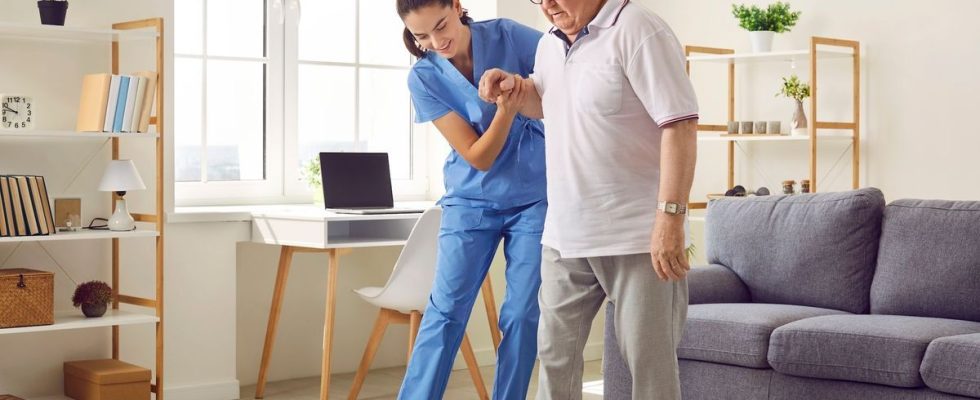Published on
Updated
Reading 1 min.
Researchers from the universities of Harvard (United States) and Waterloo (Canada) have developed a prototype of a flexible exoskeleton to improve the walking autonomy of stroke victims.
The device was tested for four weeks in four patients who suffered a stroke which left them with motor sequelae. The flexible exoskeleton can be attached to the ankle with one hand. It is connected to a sensor which records movements and to a smartphone which allows data to be retrieved and to maintain contact with the person.
Impulse the movement of walking
Its role is not to perform the movements instead of the person as a rigid exoskeleton would. The purpose of the device is “to provide just enough assistance to help practice good gait mechanics”, explained Richard Nuckols, of the department of systems design engineering at the University of Waterloo, to our colleagues at World. Thanks to this flexible exoskeleton, people can walk without human accompaniment. This is precisely what makes this new device special: the promise of autonomy.
Improved walking propulsion
The test consisted of using the device independently three to five days a week in a place chosen by the participants. The latter had to register on a mobile application to signal the start and end of their walking session with the device, to describe the type of terrain chosen as well as their feelings. After analyzing the data, the researchers found that two of the four users improved their walking propulsion by an average of 27%. But that’s not all. The use of the flexible exoskeleton allowed them, one week after the study, to cover an average of 4000 steps more than before the start of the study.
These results cannot be applied to all stroke victims with walking difficulties, due to major biases (small number of participants, absence of a control group, etc.). Nevertheless, the study has the merit of showing “preliminary evidence of the potential of this type of equipment to improve training and rehabilitation within the community”, explained the authors of this work.
This device would constitute a complementary therapy to the clinical therapy.
